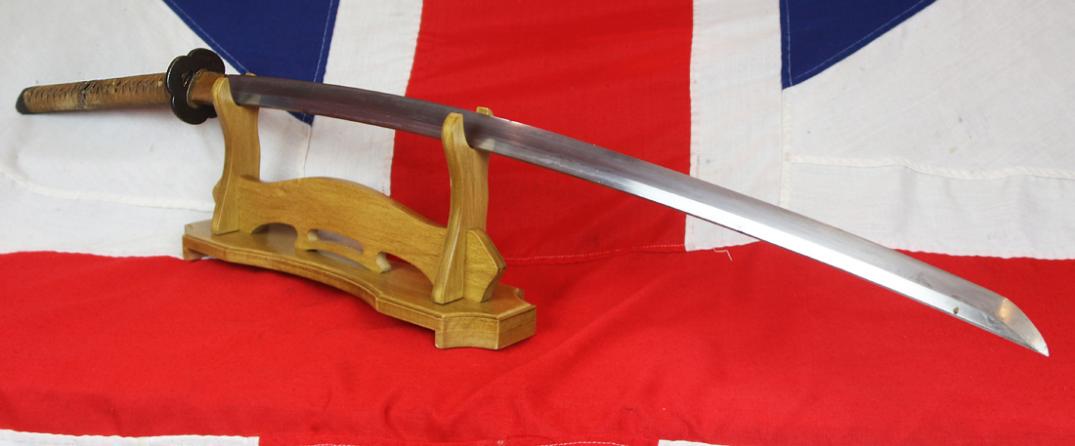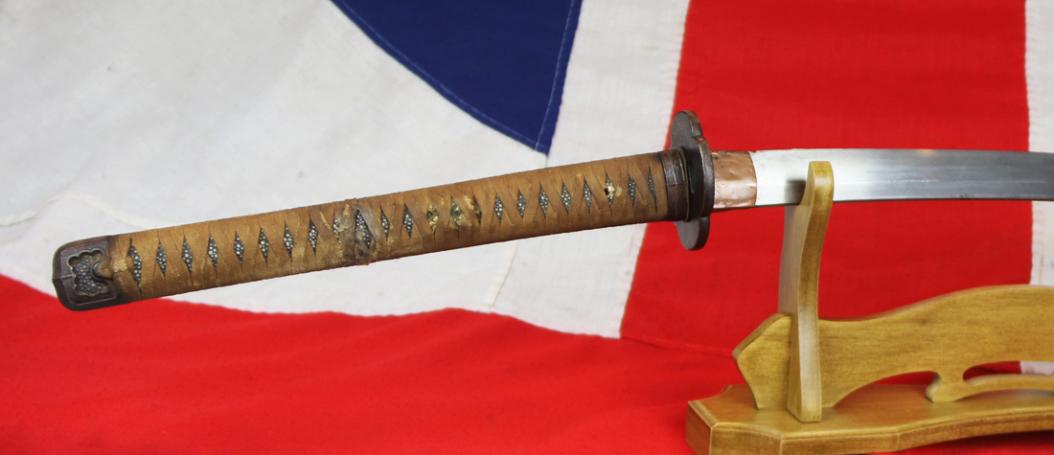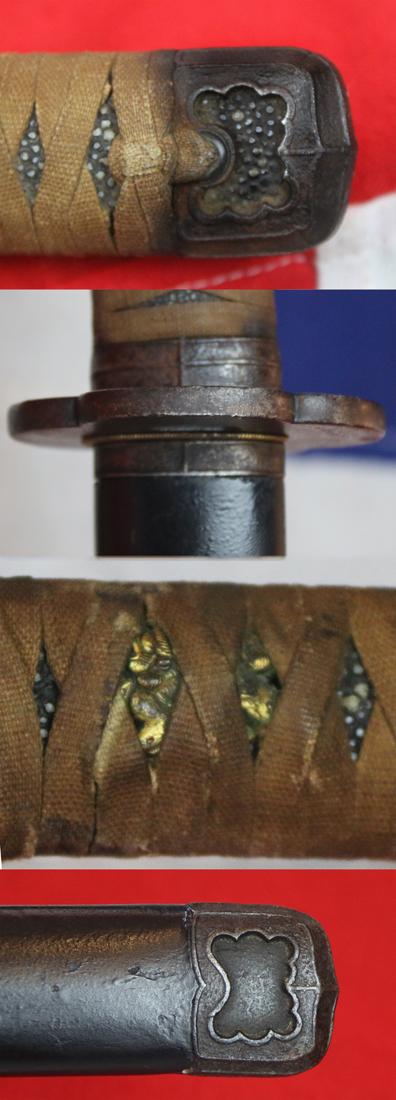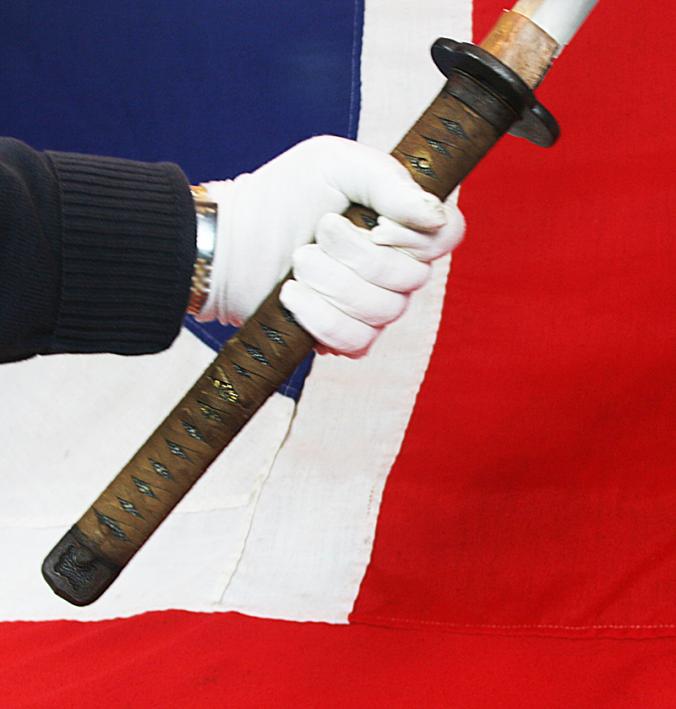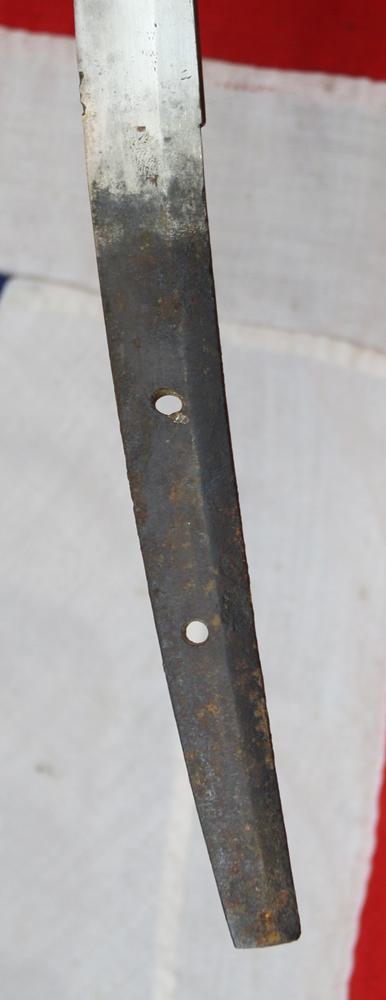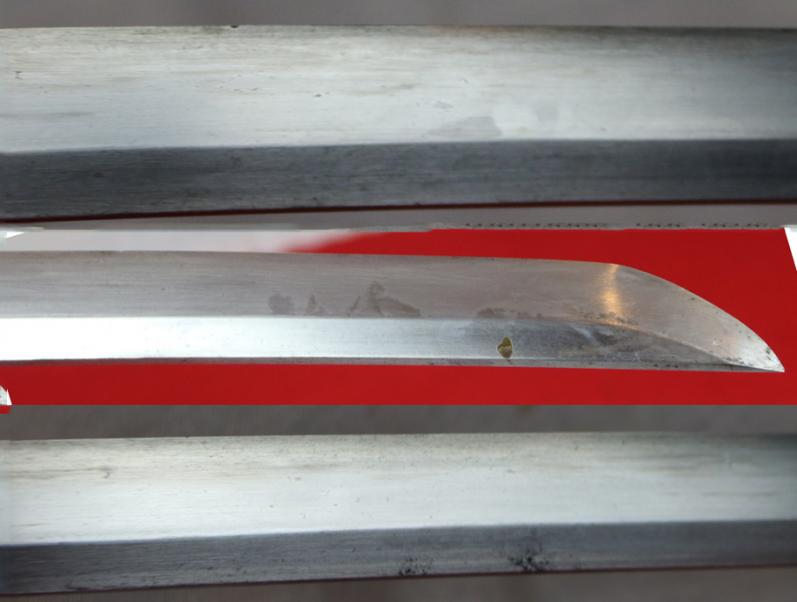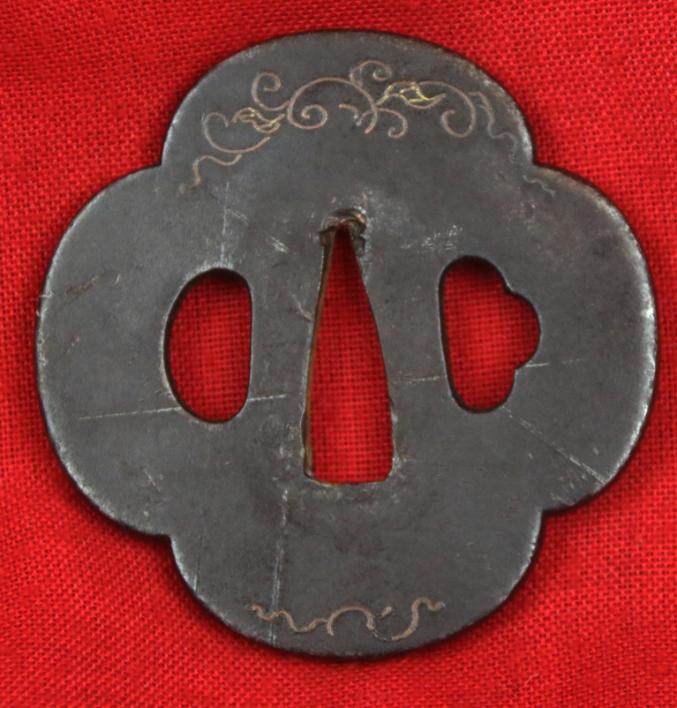A Huge Ancient 600 Year Old Ancient Katana, Likely Originally Made as a Tachi or Odachi for Use on Horseback.
this is a truly spectacular sword, the essence of a true statement piece!. It has a 301/2 inch long blade, with a total length 44 3/4 inches long, a sword of incredible stature and presence. Fully mounted han-dachi style with a full suite of Edo period koshirae. Once used as a tachi slung sword or odachi. From the Heian to the Muromachi Period, the primary battlefield sword was the tachi. Its long blade and sharp edge made it ideal for use on horseback. In the Nanboku-cho period in the 14th century, huge Japanese swords such as odachi became popular. The reason for this is thought to be that the conditions for making a practical large-sized sword were established due to the nationwide spread of strong and sharp swords of the Soshu school. In the case of odachi whose blade was 150 cm long, it was impossible to draw a sword from the scabbard on the waist, so people carried it on their back or had their servants carry it. Large naginata and kanabo were also popular in this period. However, as infantry were often equipped with yari and naginata, this fashion died out in a short period of time. Furthermore, from the Sengoku period in the latter part of the Muromachi period to the Azuchi-Momoyama period, as tactics shifted to fighting with yaris and guns by a large group of infantry, ōdachi became even more obsolete. As ōdachi became less effective, it was often reduced in size from below the hilt and thus changed its function and used as a tachi or katana.
Odachi was used as a weapon, but because of its magnificent appearance, it was often used as an offering to kami, a Shinto shrine. For example, Oyamazumi Shrine, which is said to be a treasure house of Japanese swords and armour, is dedicated to the national treasure Odachi, which was dedicated by Emperor Go-Murakami, and ōdachi, which was dedicated by Omari Naoharu and killed Kusunoki Masashige.
In the peaceful Edo period, ōdachi was no longer regarded as a practical weapon and came to be recognized only as an offering to the kami of Shinto shrines. During the fifteenth century, the uchigatana came into use, and during the Muromachi Period (1336 to 1573) use of the uchigatana became widespread.
The word uchigatana can be found in literary works as early as the Kamakura Period, with uchi meaning "to strike" and gatana (katana) meaning "sword", so that uchigatana means "sword to strike with". The uchigatana was originally used only by individuals of low status or rank, such as the ashigaru.
Most uchigatana made during the early Kamakura Period were not always of the highest standard, and because they were considered relatively disposable, virtually no examples from these early times exist today. It was not until the Muromachi Period, when samurai began to use uchigatana to supplement the longer tachi, that more uchigatana of higher quality were made. During the Momoyama period, their use in combat was very fast and effective. Unlike the tachi, with which the acts of drawing and striking with the sword were two separate actions, unsheathing the uchigatana and cutting the enemy down with it became one smooth, lightning-fast action. This technique was developed in the arts of battojutsu, iaijutsu, and iaido.
The curvature of the uchigatana blade differs from the tachi in that the blade has curvature near the sword's point (sakizori), as opposed to curvature near the sword's hilt (koshizori) like the tachi. Because the sword is being drawn from below, the act of unsheathing became the act of striking. For a soldier on horseback, the sakizori curve of the uchigatana was essential in such a blade, since it allows the sword to come out of its sheath (saya) at the most convenient angle for executing an immediate cut. Han-dachi originally appeared during the Muromachi period when there was a transition taking place from Tachi to katana. The sword was being worn more and more edge up when on foot, but edge down on horseback as it had always been. The handachi is a response to the need to be worn in either style. The samurai were roughly the equivalent of feudal knights. Employed by the shogun or daimyo, they were members of hereditary warrior class that followed a strict "code" that defined their clothes, armour and behaviour on the battlefield. But unlike most medieval knights, samurai warriors could read and they were well versed in Japanese art, literature and poetry.
Samurai endured for almost 700 years, from 1185 to 1867. Samurai families were considered the elite. They made up only about six percent of the population and included daimyo and the loyal soldiers who fought under them. Samurai means one who serves."
Samurai were expected to be both fierce warriors and lovers of art, a dichotomy summed up by the Japanese concepts of bu to stop the spear exanding into bushido (the way of life of the warrior) and bun (the artistic, intellectual and spiritual side of the samurai). Originally conceived as away of dignifying raw military power, the two concepts were synthesized in feudal Japan and later became a key feature of Japanese culture and morality. The quintessential samurai was Miyamoto Musashi, a legendary early Edo-period swordsman who reportedly killed 60 men before his 30th birthday and was also a painting master. This swords habaki blade collar was shown in the photos slightly dented it is now as new, and the blade will return from polishing in August
Code: 23648



